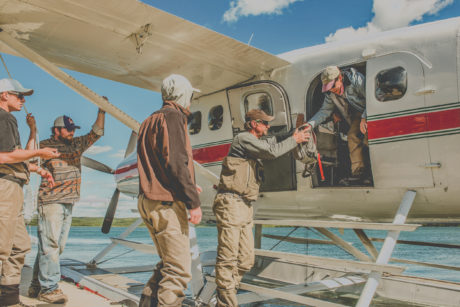
If you’ve got your sights set on an epic Flyout Fishing trip, there is no doubt a hike will be involved. So it’s wise to prepare your gear and your mind and body in the weeks and months leading up to it to maximize your trip of a lifetime. So here are seven tips for you to help ensure you have a remarkable experience.
Master your Roll Cast– In most flyout situations, you’ll be flying to remote locations where the land is vast pristine, and the waters are gleaming with fish a d opportunity. There will also be many instances where you’ll be in tight quarters, and you won’t have a lot of room for a full casting stroke. Being able to execute a roll cast effectively will help you fish in tight quarters. If you fly fish already, you probably learned the roll cast. If you’ve never fly-fished before and need to learn, click here for a “How to Roll Cast” lesson. The beauty of the roll cast is you can practice almost any here, anytime. Whether you’re a seasoned veteran fly angler or just starting, practicing your roll cast will benefit you and will come in handy on your flyout fishing trip.
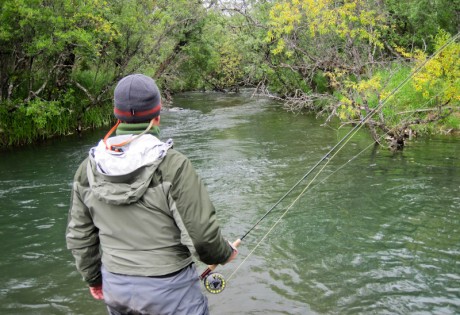
Pack Light– Fly-out fishing it’s all about weight and balance on the plane, especially on take-off and landings. It’s critical to be as light as possible while flying into remote airstrips or on water. Here are some things to consider.
- Four (4) piece rod- Keep your 2 piece at home. Get a four (4) piece rod. They fit in planes much nicer
- Flies Fly Boxes- Choose one or two fly boxes that you really like. You don’t need your complete arsenal of flies. Do your research and find out what flies you’ll need for that area.
- Net- If you have to take a net, choose one that is lightweight and compact.

Get a compact backpack – There have been many instances where people will bring a roll-top dry bag and carry it or just a simple hip pack. Roll-top dry bags are nice, but you have to carry them with your hand Hip packs are nice for shorter day trips. In lieu of that, get yourself a compact waterproof backpack to carry your fly boxes, snacks, camera gear, water, etc. This way, your hands only have to worry about your fly rod. Just do a dry run to make sure all the things you want in the bag can fit.
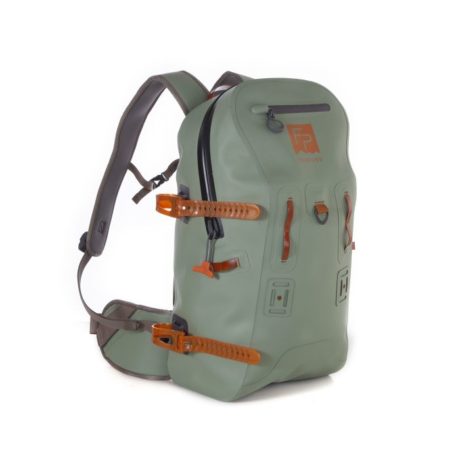
Layer your clothes- Layering allows you to adjust to weather conditions better. Just be mindful. You’ll be cold at the start, but once you start moving, you’ll get warmer. Keep this in mind, especially when you’re putting on your waders. You may be able to get away with just a mid-layer if you can avoid cotton.
- Next to Skin Layer- Start with next to light or medium next to skin-wicking shirts and underwear. These temperature balancing clothing are amazing and work wonders in a variety of situations.
- Mid Layer- The mid-layer, if necessary is your warmer insulating layer for the cold morning starts. When it’s the middle of the day, you can take them off and put them in your compact backpack.
- Outer shell with a hood- Wind cutter and rain shell
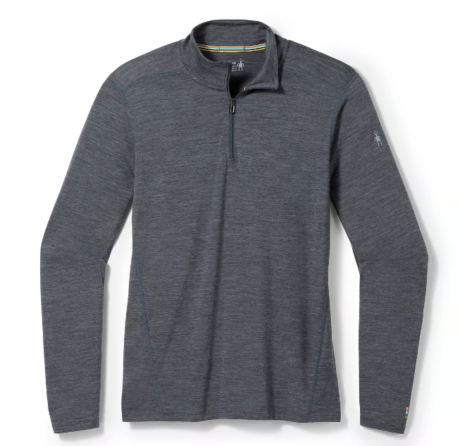
Get yourself a Collapsable water bladder– Firm reusable plastic bottles are nice, but even when empty, they are bulky. Collapsable water bladders are the bee’s knees. When filled, they are easier to pack, and when empty, they are super compact and weigh very, very little. You can even get bladders that integrate with your backpack and has a straw drinking system. So you can put the bladder in your bag and use the straw for drinking the water. You never have to take the bladder out. The good ones are also very durable. An additional tip, designate one for water only, as they are hard to clean.
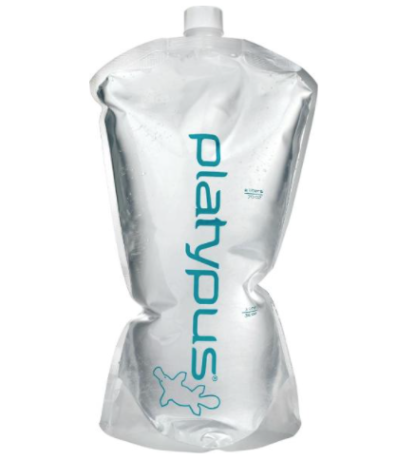
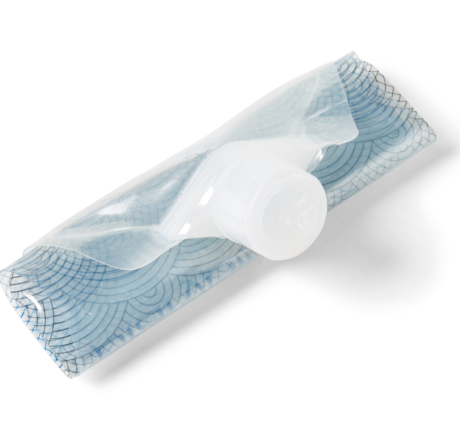
Carabiners and straps are your friends– Carabiners and straps are your friends. That being said you don’t want to be dangling everything off your compact backpack—just the essentials, like bear spray and your water bottle. You don’t need high-grade climbers’ carabiners either, just something that will carry your gear.
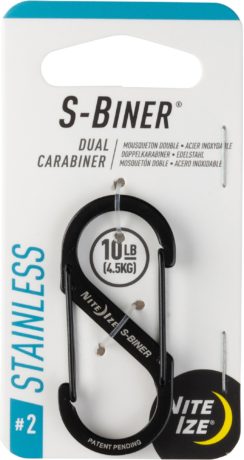

Have Bug Spray- In Alaska, flyout fishing can be a blood sport, and what I mean is your blood. Skeeters and other bugs can be voracious. Deet works best, but it’s not the best for everyone or your equipment and gear. There are many alternatives, but make sure you have plenty of it. You should also consider getting Permethrin Spray for your Clothing.
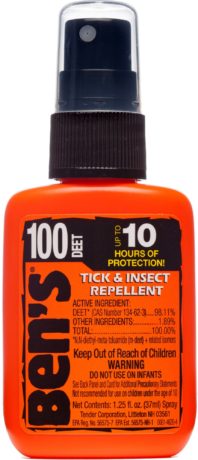
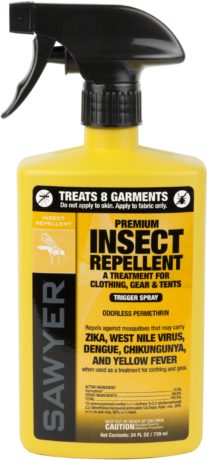
Get in some exercise– Fly-out trips inevitably will involve a hike. Some are short, and some are long. Some may have more challenging terrain with elevation. Regardless if you’re in tip-top shape, you can truly enjoy the experience instead of worrying about being sore, exhausted or slowing anyone else down. If you’re already active and feel like you’re in good shape, you may think you don’t need to condition for your trip. But be honest with yourself – when’s the last time you put on a backpack and slogged up a trail? Hiking is more than just walking. It’s an endurance thing. The best part is you can train at home without spending a dime. The more you prepare, the better you’ll feel when the big day comes. You probably have your own exercises you do, then you should keep doing them. But if you need a new routine, below are some suggestions on basic exercises to start doing prior to your trip.
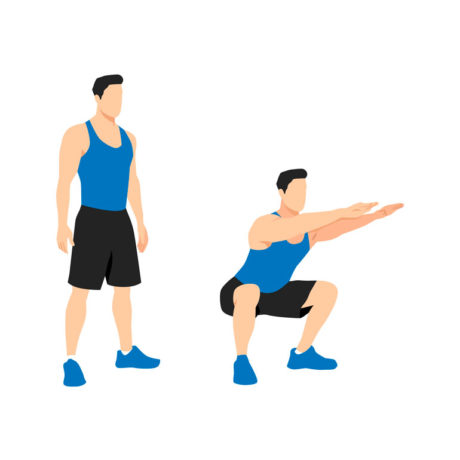
Before engaging in any physical exercise, please consult your physician.
Squats– Do squats if you only have time for one exercise. They’re great for strengthening your glutes and legs, which are put to a lot of work while hiking. Stand shoulder-width apart with your feet shoulder-width apart. Bend your knees and sit back as if you are sitting in a low chair behind you, keeping your knees in line with your ankles. Maintain an open and upright chest. Then, tightening your glutes as you stand back up, drive your weight into your heels. Extra credit: Add resistance to your squats by holding a weight in your hands. Reps: 1-3 sets of 20
Lunges- Lunges will h lp you build your quads which are the largest muscles in your legs, so you’ll be ready to race up those steep uphill sections of the trail. Begin by standing with your feet together to perform this exercise. Step forward with your right foot and lung forward. Then take a stride back with your right foot to meet your left. Next, lunge to the side with your right foot stepping to the right. Bring your right foot back to the point where it meets your left. Then lunge back with your right foot stepping back behind you. Bring your right foot in front of your left to meet it. Follow with reps on the other side. That counts as one rep. Hold a weight or a water bottle in each hand if you want to boost your game. Reps: 1-3 sets of 1 +
Mountain Climbers– Mountain climbers provide a quick burst of cardio to help you prepare your lungs and heart for backpacking. They also strengthen your core, which helps to support your weight and provide stability on uneven terrain. Start with your hands just under your shoulder ers on the floor and your legs extended behind you in a high plank position. Maintain n a straight line with your body and raise yo r right knee to reach your chest or outside right elbow (try both). Return your foot to plank position after a brief pause. Rep with your left knee, keeping everything tight with your core. Alternate sides as q quickly as you can while maintaining control. Reps: 1-3 sets of 20+
Step-Ups – Step-up exercise increases the strength and endurance of your glutes and quadriceps muscles, allowing you to step up and over any number of felled logs or obstacles in your path. To step up onto, you’ll need a solid surface about 8 inches from the ground. A flight of stairs’ bottom step works nicely. Begin by placing your left foot on the ground and your right foot atop the step (your right knee will be bent). Step up until you’re standing on top of the step with your right leg nearly straight and balanced. Pause in a balanced position with your left foot a few inches over the step. Then take a step down, restoring your left leg to its original position. Reps: 1-3 sets of 20+
Calf Raises/ Heel Dips– Calf raises and heel dips will chisel your calves and strengthen your ankles and feet, making you less weary and more stable on uneven terrain. This workout will require a stable step. A flight of stairs’ bottom step works nicely. Begin by placing both feet on the top of the step, with your weight on your toes/balls of your feet and your heels dangling over the edge. Start by standing on your toes and squeezing your calves, pausing at the top. Then, with your heels dipped below the step’s edge, lower them. Return to a neutral position before repeating. Reps: 1-3 sets of 20+
There is plenty of instructional information online on doing each exercise correctly. Please be mindful and careful on how you engage and focus on form rather than weight or speed.
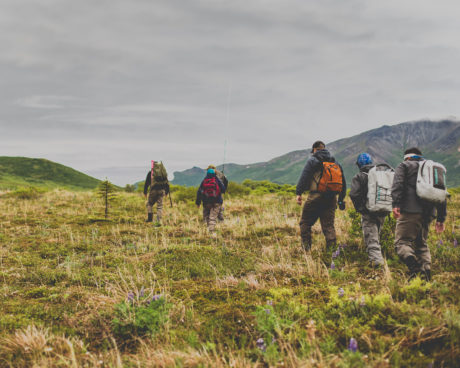
If you’ve planned a flyout trip to Alaska, we hope you consider all these tips, as they will better your angling experience. If you have any questions, please reach out to us at info@deneki.com, and we’d be more than willing to help you out. If you have not experienced an Alaskan flyout trip and want to experience one, we can help with that too. Contact us at info@deneki.com or call us at (907) 563-9788.
Other Posts About Alaska Fishing:
Leave a Reply